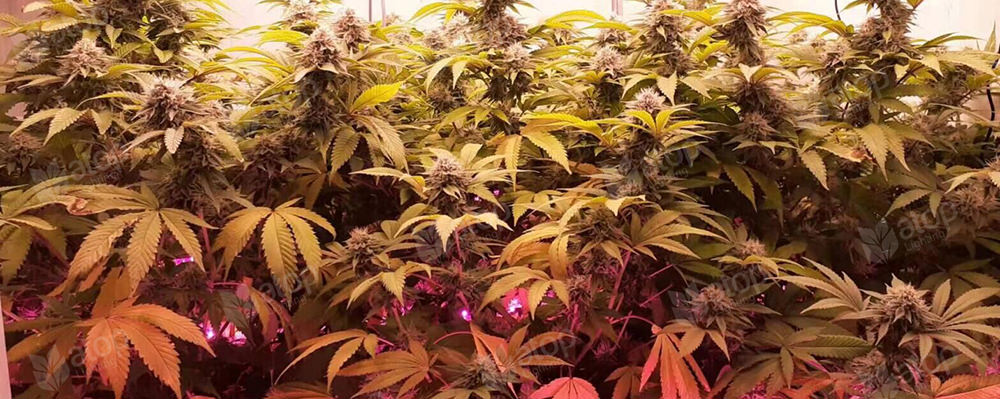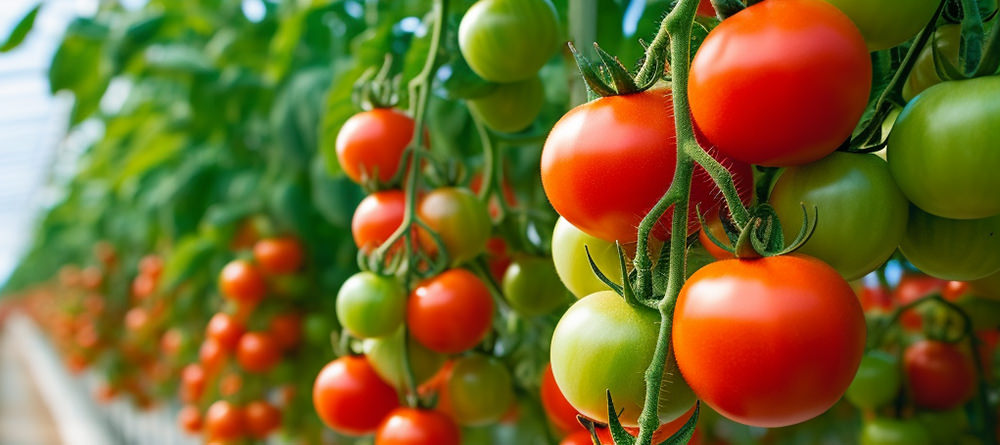How Different Light Colors Impact Plant Growth
Have you ever wondered why some plants are green, while others are red, purple, or even rainbow-colored? The answer lies in the color of the light they receive. It’s not a secret that light plays a crucial role in their growth and development. But have you ever stopped to wonder how different light colors impact plant growth?
Today, we would like to talk about the intricate relationship between light colors and plant growth. By understanding how plants receive and respond to different light colors, we can unlock the key to optimizing their growth, enhancing productivity, and even influencing flowering and fruit production.
Visible light colors
Visible light colors are the different wavelengths of light that we can see with our eyes. In between, there are colors such as red, blue, green, yellow, and orange, which form the spectrum of visible light.
Visible light from the sun contains all the colors of the rainbow. But not all wavelengths of light are equal when it comes to plant development. Chlorophyll, the green pigment vital for photosynthesis, primarily absorbs red and blue light. Meanwhile, carotenoids, which assist in light harvesting and protect against excess light, utilize blue-green and yellow-orange hues.

The role of light in photosynthesis
Photosynthesis is the process by which plants convert light energy into chemical energy, which they use to grow and survive. Light plays a crucial role in photosynthesis, as it provides the energy and the signals for the plant to perform this complex reaction.
Plants absorb light through specialized molecules called pigments, which are mainly located in the chloroplasts of the plant cells. The most common pigment is chlorophyll, which gives plants their green color and absorbs mostly blue and red light. Other pigments, such as carotenoids and anthocyanins, absorb other colors of light and reflect or transmit the rest. The absorbed light energy is used to split water molecules into oxygen and hydrogen and to produce a high-energy molecule called ATP. The oxygen is released as a by-product, while the hydrogen and the ATP are used to fix carbon dioxide into organic compounds, such as sugars and starches. These compounds are then stored or used by the plant for various purposes, such as growth, repair, and reproduction.
Red light: stimulating growth and flowering
Red light, with its longer wavelength and lower energy, plays a pivotal role in stimulating growth and triggering flowering in many plant species. Deep red (660nm) light is perfect for encouraging stem elongation and leaf expansion. Far-red light can cancel out the effects of red light, making it useful for preventing unwanted stretching or delaying flowering in long-day plants.
One of the primary effects of red light is its ability to promote stem elongation and leaf expansion. This phenomenon is particularly crucial in commercial greenhouse cultivation, where growers aim to produce tall, robust plants with ample foliage. By exposing plants to red light, they can encourage vigorous growth, resulting in lush canopies and bountiful yields.
Moreover, red light serves as a key regulator of flowering and fruit production. When plants receive an adequate dose of red light, it triggers a series of physiological responses that culminate in the initiation of flower buds. This is of utmost importance for both commercial growers and home gardeners, as it determines the timing and abundance of blooms and fruits.
Interestingly, certain plant species exhibit a specific affinity for red light, responding more prominently to its presence. For example, flowering plants such as roses, tomatoes, and strawberries thrive under red light conditions, showcasing accelerated flowering and enhanced fruit development.

Blue light: enhancing photosynthesis and compact growth
Blue light simulates the clear sky and stimulates the plant’s response to the high light intensity. With its shorter wavelength and higher energy, plays a crucial role in enhancing photosynthesis and influencing plant morphology. 440nm Blue light is ideal for boosting chlorophyll production and overall plant health. Deep blue (470nm) encourages even leaf distribution and compact growth, perfect for preventing leggy plants.
One of the key effects of blue light is its ability to enhance photosynthesis, the process by which plants convert light energy into chemical energy. Blue light is readily absorbed by chlorophyll, stimulating the production of adenosine triphosphate (ATP) and nicotinamide adenine dinucleotide phosphate (NADPH), essential energy carriers in photosynthesis. This increased energy production fuels the synthesis of glucose and other vital compounds, promoting overall plant growth and vigor.
Additionally, blue light influences plant morphology, resulting in compact growth and sturdier structures. When plants receive an adequate amount of blue light, they exhibit shorter internodal distances, meaning the spaces between leaves and stems are reduced. This compact growth pattern leads to denser foliage, making it highly desirable for cultivating ornamental plants and crops with a focus on leafy greens.
Green light: surprising discoveries and misconception
Green light is often overlooked or underestimated in plant growth, as it is commonly believed that plants reflect most of the green light and use little of it for photosynthesis. In fact, chlorophyll does weakly absorb green light for photosynthesis, just less effectively than blue or red. But green light penetrates deeper into plant tissue, driving photosynthesis in layers that other colors can’t reach.
Although green light is not as readily absorbed by chlorophyll, it still plays a significant role in plant physiology. Recent studies have shown that green light influences stomatal regulation, affecting the plant's water balance and gas exchange. It also impacts the structure and function of chloroplasts, the cellular organelles where photosynthesis takes place.
Moreover, green light has been found to play a role in seed germination, root development, and overall plant morphology. It can influence plant architecture, branching patterns, and even the production of secondary metabolites.
Discover How Green Light Can Boost Tomato Yield and Quality

UV light: plant protection and compact growth
Ultraviolet wavelengths exist outside the visible color spectrum, just beyond the color violet. But despite being invisible to the human eye, UV light has some intriguing effects on plant development. It is divided into three types: UVA, UVB, and UVC, depending on the wavelength and the effect on living organisms.
One of the key responses to UV light is the production of secondary metabolites, such as flavonoids and phenolic compounds. These compounds play a vital role in protecting plants from UV-induced damage by acting as natural sunscreens, absorbing and dissipating UV radiation. Additionally, they possess antioxidant properties, helping to neutralize harmful reactive oxygen species generated by UV exposure.
Furthermore, UV light influences plant growth and development. UV-B radiation, in particular, has been shown to affect leaf morphology, stomatal density, and even the production of essential plant hormones. These effects can contribute to changes in plant architecture and overall performance.
While excessive UV exposure can be detrimental to plants, controlled doses of UV light can be beneficial. In commercial horticulture, growers have started utilizing UV light treatments to enhance crop quality, improve disease resistance, and influence key attributes, such as flavor and nutritional content.


